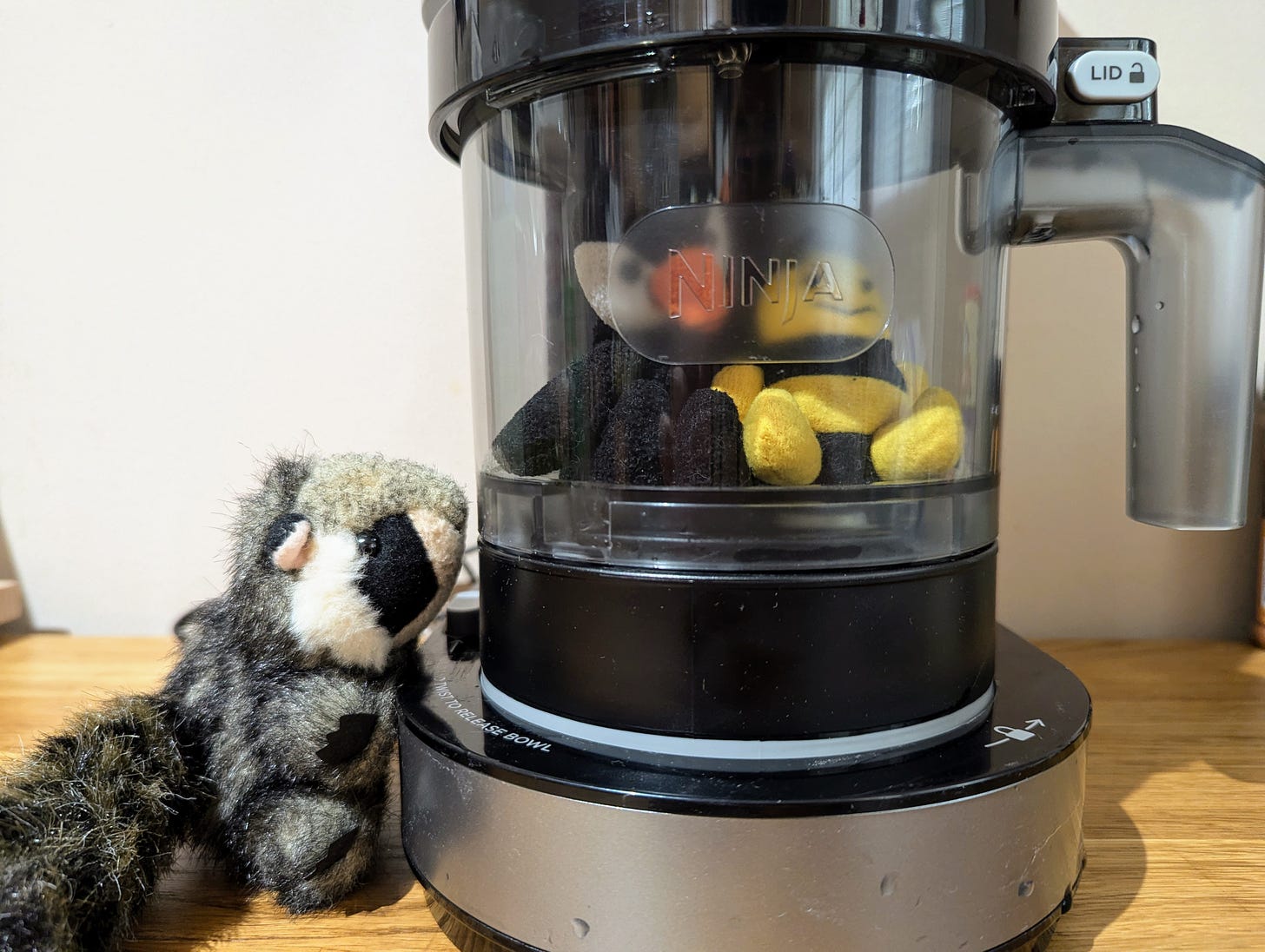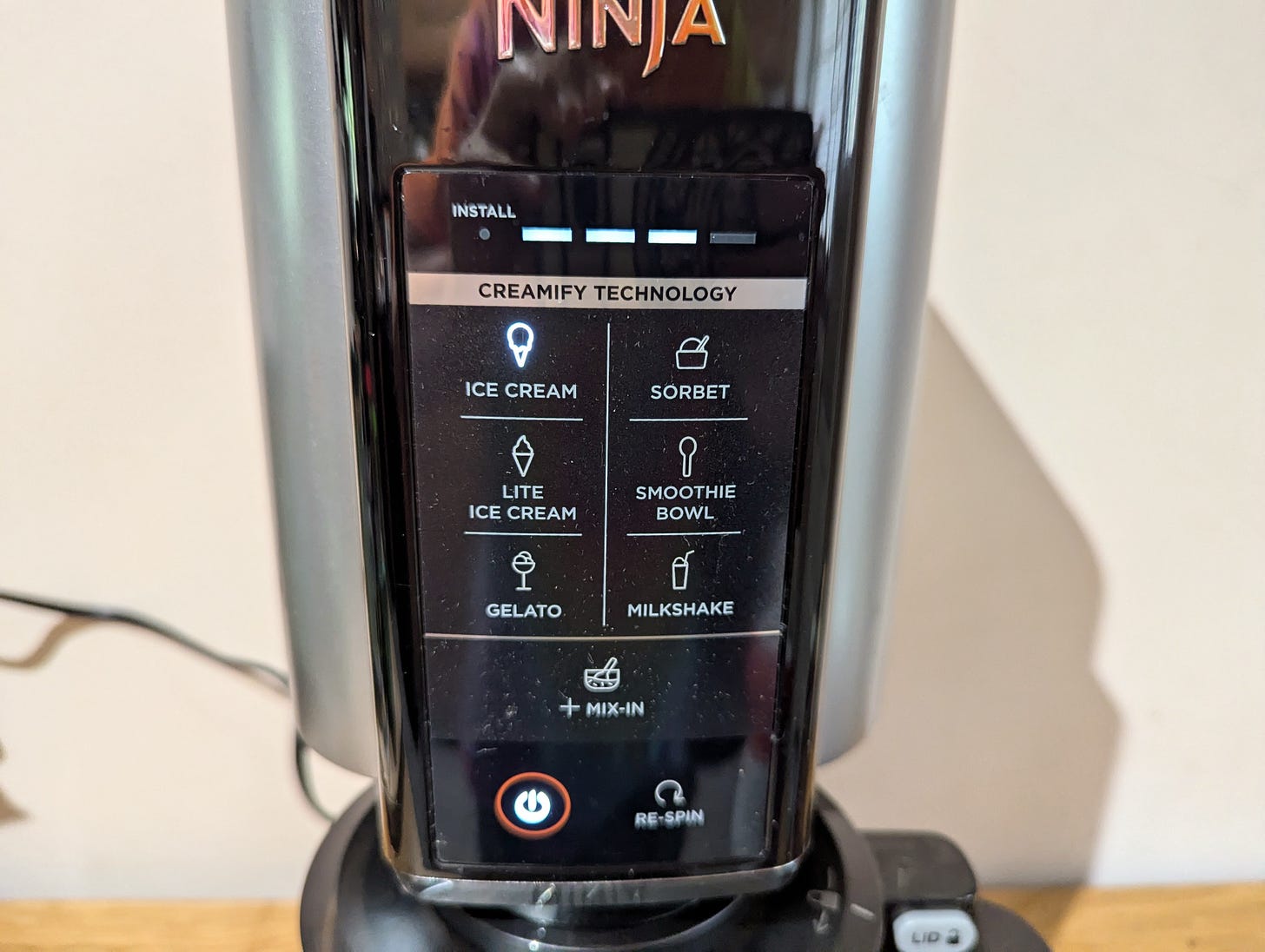Hey, clowns!
Hope you’ve all had a good week, because I’m about to ruin it with today’s food experiment. That’s because it’s all about one of the most divisive (and delicious) condiments out there: mayonnaise.
Personally, I’m a big fan of mayo. I grew up eating Miracle Whip, because that’s what mom used for our sandwiches, but my life changed once I discovered actual mayonnaise. Because I think mayo is awesome. It’s thick, creamy, rich, makes any dry sandwich way better, and frankly, I’m not afraid to admit that it’s also a little bit gross.
That’s why I know there’s a lot of you out there who hate, and I mean, hate, mayonnaise. One person I know who absolutely can’t stand the stuff is my good friend Ariel, who has a newsletter called Rel’s Recs. (And I see you, commenter Max!) But before I continue, make sure you sign up for Ariel’s newsletter; she basically recommends useful and cool shit to you to make your life better.
Now that you’ve all signed up to read her stuff, just know that Ariel’s dislike of mayo actually goes past hate and goes straight to offending her. It’s to the point where whenever I mention mayo in any of my newsletters (including my newsletter about new-to-us Chicago restaurants Davida and I visit weekly), I can be guaranteed to get a reply from Ariel remarking about how everything looks good aside from anything with mayo in it.
So I did a lot of soul searching. I like mayo in things like frog salad, as an occasional condiment to things like Belgian-style fries, and in my nasty deviled Jesus eggs, but I really wanted to push its boundaries. Like, I pretty much only use mayo as-is, or as a binder in dishes. But how could I turn it into the main event? Would mayo be good for other things, like, say, dessert?!
When you think about it, mayo’s pretty creamy, and so are a lot of desserts, which is why my brain’s attention immediately focused on ice cream. Though there really isn’t any cream in mayo, it’s an emulsion of eggs and oil that ends up looking and feeling vaguely like a dairy product.
So why not try putting mayonnaise in my ice cream maker to see what happens? As I was working through this train of thought, I told Davida what I was thinking about, and she said carefully, while nodding, “There's eggs in frozen custard and people put olive oil on ice cream.”
See, it’s that kind of childlike logic that really fuels this newsletter.
Subscribe now
That’s why I whipped out my trusty Ninja Creami ice cream maker, an ice cream maker so beloved I haven’t used it in well over a year.
Don’t take that for me talking shit about it, by the way. This thing is actually pretty fun, and it makes good homemade ice cream using an interesting method. I’m just extremely lazy and prefer buying ice cream at the grocery store, because every now and then a pint of Ben and Jerry’s fits perfectly in my ice cream hole.
When it comes down to it, the Ninja Creami is basically a weird powerful culinary drill.
You put a fully-frozen pint of ice cream base in it (like, frozen solid), and it uses a shaving blade to grind down into it and turn it into ice cream, not unlike a Pacojet, which is a fancy ice cream maker you see in some high-end restaurant kitchens. Except those are like $5,000 and up, while a Ninja Creami is like $200 (full disclosure, I got my unit for testing for my day job back in 2021).
Also, The Ninja Creami is a good place to hide Harvey and Mr. Bee from the cats, but Pepper’s too big to fit and has to fend for herself out in the wilderness. Don’t worry, I wasn’t planning on turning them into ice cream, unless Pepper decides to press the power button.
For this experiment, I decided to use my usual standby mayo, which is Hellman’s.
Yes, yes, I know about Duke’s, which we’ve had in Chicago for a while now. Sometimes I switch it up, but Hellman’s is usually cheaper, plus I find it much more suitable for slathering all over handrails, doorknobs, and the deep crevasses of my body.
I started by simply transferring the contents of the Hellman’s jar to the special pint container you need to use for the Ninja Creami.
I have learned that mayonnaise makes some really interesting noises when you have to move it from one container to another. I did not know that one substance could make a kaleidoscope of crackling and squelching noises all at the same time.
I then stuck the pint of Hellman’s in the freezer to set up overnight and meditated deeply upon the fact that Hulk Hogan showed up on stage at the Republican National Convention earlier this year.
The next day, the mayonnaise had frozen into a solid icy mass within the pint container.
I’d show you a photo of it, but it looked exactly the same the next day. Once your ice cream base is frozen, you then insert it into yet another container to get started on the churning portion.
This is where the blade comes in — you snap it on top of the churning chamber (that’s my technical term for it), lock into place, and secure the entire thing into the Ninja Creami.
This entire system is weirdly complicated in a logical way, probably designed so that you can’t like, puree your hand or something. A hand sorbet sounds like something they’d serve at a whimsical three Michelin-starred restaurant, but I’m not so sure the emergency room doctors would find that so funny.
Not only is this thing capable of making ice cream, it also makes shit like gelato, milkshakes, and there’s even a very specific button for a smoothie bowl.
Also, are acai berries still the new black? What exactly is an acai berry? The world may never know. As much as I wanted to classify a frozen block of mayo as a smoothie bowl of sorts, I decided just to hit the “ice cream” function instead.
And yes, any device that has a literal drill installed in it is going to be pretty damn loud to the point where your cats will indeed be afraid of the racket.
Speaking of cats, our cats are fucking terrible. Davida and I were out grabbing a small amount of groceries the other day, and when we returned, we noticed a funny odor in the apartment. It turns out one of the little assclowns had tried climbing on the stove while we were gone and accidentally turned on a burner, filling the apartment with gas. Thank God I located the source of the smell.
Man, we were this close to showing up in the national news. I wonder what Hulk Hogan would have had to say about it.
A few noisy minutes later, and the churned frozen mayonnaise was out, ready to be revealed to the world (me, the gang, and you, Davida was at work).
Hmm. It looked exactly like…mayo.
I dipped into the frozen-then-drill-churned mayonnaise and noticed it had already mostly thawed back to its original consistency, though it was a little extra fluffy-looking and grainy.
I guess it wasn’t going to turn into a proper ice cream substitute, but you know, that’s okay. This is how science progresses. Failures turn into wins someday. Though in retrospect, I’m not sure how anyone wins if you convert mayo into a frozen treat.
Speaking of wins, I then decided to top the scoops of cold mayo with this questionable-looking “Unicorn” Magic Shell from Smuckers.
It’s white and viscous (stop), and has little colored beads in it, because everyone knows that this is what unicorn fluid (again, stop) looks like, right?
Then I finalized the whole thing with some whipped cream and added a maraschino cherry on top.
Ah yes, nothing like a mayonnaise sundae that didn’t quite set up. This is probably my finest moment. I’m 43, standing in the kitchen with some stuffed animals, about to dig into a ramekin full of thawing mayonnaise topped with unicorn Magic Shell, whipped cream, and a cherry, while my wife is still at work.
Well, I made this horrendous crap, I might as well try it.
So here’s the thing: I had already been queasy all day, and not in anticipation of this pig slop. I don’t think I’m officially sick, but I may have had something going on with my stomach, because I had already been somewhat nauseous since I’d woken up that morning. Also, the diarrhea might have been a red flag, but what do I know? I’m not an electrician.
I took a timid spoonful of the cold mayo sundae and found that the Magic Shell had in fact successfully set up, indicating to me that the mayo was still cold. I could smell the tangy-sour mayo before I reluctantly put it in my mouth, and when I did, I was not a happy camper.
Eating a spoonful of salty, tart, and coagulated egg and oil was bad enough, but the exterior texture of it had changed to some sort of slick consistency. And to make things worse, it turns out the unicorn Magic Shell is a culinary abomination and of itself. It’s “white cupcake” flavored, which means it tastes like waxy vanilla-flavored ChapStick. Humanity doesn’t deserve that shit. Okay, on second thought, maybe it does.
I discovered exactly what had happened to the mayo upon closer inspection.
The emulsion had started to break, as in the oil was beginning to weep out from the main mayonnaise mixture. It was as broken as my hopes and dreams for this experiment, and now here I was, having eaten some of it.
At least I have an experience that most people do not (though I somewhat regret this), and now I can warn you of the dangers of unicorn Magic Shell, which may actually be more important to know, because, gross.
Now if any one of you ever wonder what it’s like to put mayo in an ice cream maker, I’m your man with the answer. I have also answered previous questions such as “Can you brew a Papa John’s garlic cup in a Keurig machine?” and attempted to make popcorn shrimp in a popcorn maker one time, so I can add this to my pantheon of bottom-shelf food science experiments that would never make it to a TV show. But that’s what makes I, Dannis Ree, the greatest food writer in all of history.
Oh, and Ariel, I’m sorry I made you read all of this. I can’t wait to read your reply.
Okay, you know the drill, if you enjoyed today’s edition of Food is Stupid, please share it wherever you can, like Discord, Slack, Reddit, your Hinge dating profile, your own Substack newsletter, it’s all good:
Share
And of course, don’t forget to upgrade your subscription.
Subscribe now
Every other edition is for paid subscribers because it takes a lot of time and energy for me to run this thing; I hope you understand. Without you guys pitching in, I’d probably have to go sling pizza in my spare time again, but don’t worry, if you upgrade you get full access to the archives, plus all the exclusive locked stuff going forward.
A little housekeeping — I’m cooking at a charity pop-up next Thursday (which is unfortunately sold out), so I probably won’t have enough time to write an edition of the newsletter next week. Just a fair heads up. And of course, as always, I love you all, and I’ll hop back into your inboxes as soon as I can.


















